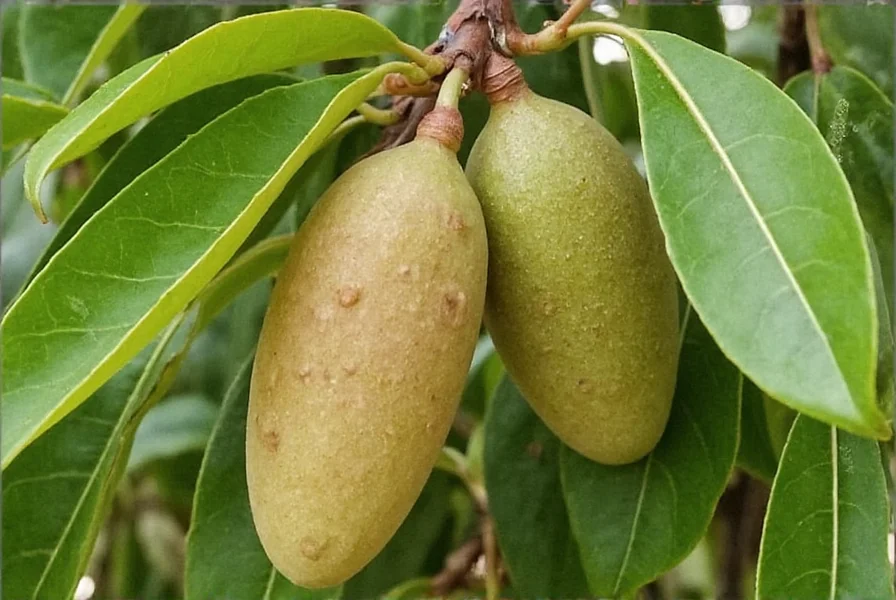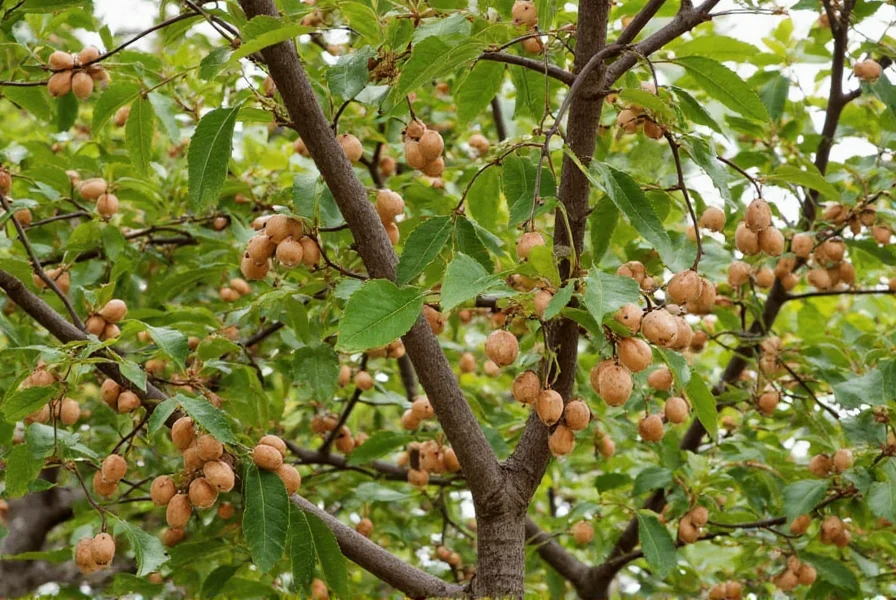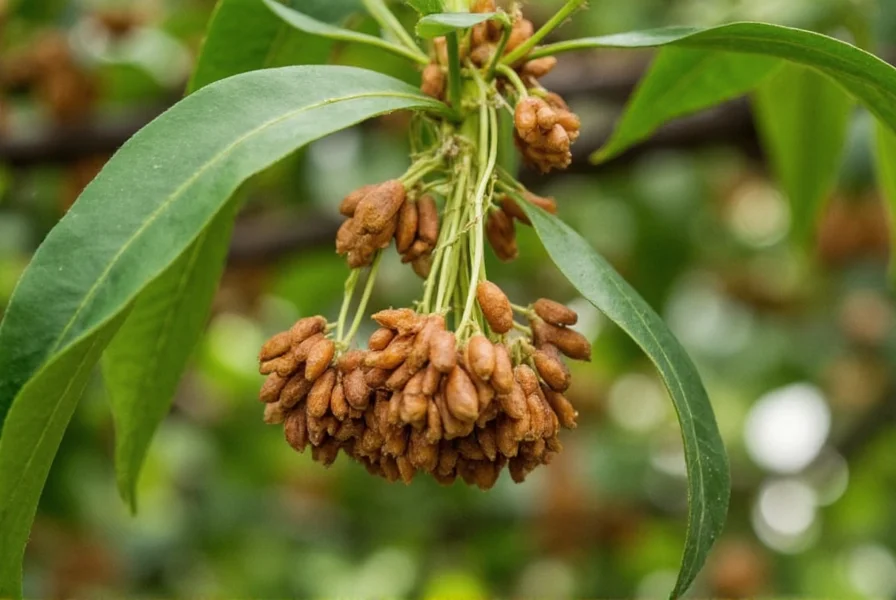The nutmeg tree represents one of nature's remarkable dual-spice producers, offering both nutmeg and mace from a single fruit. Understanding this botanical wonder provides valuable insights for horticulturists, culinary professionals, and spice enthusiasts alike.
Botanical Classification and Origins
Scientifically classified as Myristica fragrans, the nutmeg tree belongs to the Myristicaceae family. Indigenous to the Maluku Islands (historically known as the Spice Islands) in Indonesia, this tree has been cultivated for over 2,000 years. Dutch traders once maintained a monopoly on nutmeg production, guarding these precious trees fiercely until the 18th century when French horticulturist Pierre Poivre successfully smuggled seedlings to Mauritius, breaking the Dutch monopoly.
Physical Characteristics of the Nutmeg Tree
Mature nutmeg trees typically reach heights of 10-20 meters with a pyramidal shape and dense foliage. The tree features:
- Leathery, dark green elliptical leaves (5-15 cm long) with prominent yellow veins
- Small, pale yellow flowers that grow in clusters
- Fruits resembling apricots (3-5 cm diameter) that split open when ripe to reveal the seed
- Dioecious nature (separate male and female trees), though some trees can be monoecious

Nutmeg vs. Mace: Understanding the Dual Spices
One of the most fascinating aspects of the nutmeg tree is its production of two distinct spices from a single fruit. The following table clarifies their differences:
| Characteristic | Nutmeg | Mace |
|---|---|---|
| Source | Hard seed inside the fruit | Red aril (lacy covering) surrounding the seed |
| Flavor Profile | Warm, nutty, slightly sweet | More delicate, slightly sweeter, and less intense |
| Color | Brown | Orange-red when fresh, pale yellow when dried |
| Yield per Fruit | One nutmeg per fruit | One mace per fruit (typically 6-8 lobes) |
| Market Value | Less expensive | Generally more valuable (by weight) |
Growing Conditions for Nutmeg Trees
Successful nutmeg tree cultivation requires specific environmental conditions. These tropical trees thrive in USDA hardiness zones 10-12 and cannot tolerate temperatures below 2°C (36°F). Ideal growing conditions include:
- Climate: Consistently warm temperatures between 20-30°C (68-86°F) with high humidity (70-90%)
- Rainfall: 1,500-3,000 mm annually, well-distributed throughout the year
- Soil: Deep, well-drained, slightly acidic loam rich in organic matter
- Light: Partial shade when young, increasing to full sun as the tree matures
- Altitude: Below 600 meters above sea level for optimal growth
Understanding nutmeg tree care requirements is essential for successful cultivation. Trees typically begin fruiting 7-9 years after planting and reach peak production around 25 years of age. Proper nutmeg tree propagation methods involve either seed planting (with seeds no more than 2 weeks old) or grafting for consistent quality.
Harvesting and Processing Techniques
The nutmeg harvesting process requires careful timing and handling. Farmers harvest the fruit when the husk begins to split, indicating ripeness. After harvesting:
- The fleshy outer husk is removed and often used for preserves
- The mace (aril) is carefully separated from the seed
- Both nutmeg and mace are sun-dried for 1-2 weeks
- Dried mace turns from bright red to pale yellow
- Nutmeg seeds harden and become aromatic during drying
Proper drying is critical for preserving flavor and preventing mold. High-quality nutmeg should rattle when shaken, indicating complete drying. The entire nutmeg tree flowering and fruiting cycle takes approximately 12-14 months from flower to mature fruit.

Common Challenges in Nutmeg Cultivation
Growing nutmeg trees presents several challenges even in suitable climates. Key issues include:
- Pollination difficulties: Since nutmeg trees are primarily dioecious, growers must ensure proper male-to-female tree ratios (typically 1:10)
- Disease susceptibility: Phytophthora and Fusarium fungi can cause root rot, while powdery mildew affects leaves
- Pest problems: Aphids, mealybugs, and fruit borers can damage trees and reduce yields
- Slow maturation: The 7-9 year wait for first harvest requires significant patience and investment
- Climate sensitivity: Frost, drought, or excessive rain can severely impact tree health and productivity
Traditional and Modern Uses Beyond Culinary Applications
While primarily valued for its spices, the nutmeg tree has numerous traditional applications. In Southeast Asian traditional medicine, various parts of the tree have been used for centuries to address digestive issues, pain relief, and as a sedative. Modern research continues to investigate potential therapeutic properties of nutmeg compounds, though culinary applications remain its primary use worldwide.
Frequently Asked Questions
How long does it take for a nutmeg tree to produce fruit?
Nutmeg trees typically begin producing fruit 7-9 years after planting. The trees reach full production capacity around 25 years of age and can continue bearing fruit for up to 60 years under optimal growing conditions. Proper nutmeg tree care requirements significantly impact both the timing of first harvest and overall productivity.
Can I grow a nutmeg tree in a temperate climate?
Nutmeg trees require tropical conditions and cannot survive in temperate climates. They need consistently warm temperatures between 20-30°C (68-86°F), high humidity, and protection from frost. In non-tropical regions, some enthusiasts grow nutmeg trees indoors as ornamental plants, but fruit production is unlikely without replicating tropical greenhouse conditions with precise nutmeg tree climate requirements.
What's the difference between nutmeg and mace?
Though both come from the same fruit, nutmeg and mace are distinct spices. Nutmeg is the hard seed inside the fruit, while mace is the bright red aril (lacy covering) surrounding the seed. Mace has a more delicate flavor profile—slightly sweeter and less intense than nutmeg. When dried, mace turns from red to pale yellow and is generally more valuable by weight than nutmeg due to lower yield per fruit.
How do I properly care for a nutmeg tree?
Proper nutmeg tree care requires attention to specific growing conditions. The tree needs well-drained, slightly acidic soil rich in organic matter, consistent moisture without waterlogging, and partial shade when young transitioning to full sun. Regular fertilization with balanced nutrients supports healthy growth. Since nutmeg trees are dioecious, you'll need both male and female trees for fruit production (typically one male for every 10 female trees). Pruning should be minimal, focusing on removing dead or diseased branches.











 浙公网安备
33010002000092号
浙公网安备
33010002000092号 浙B2-20120091-4
浙B2-20120091-4